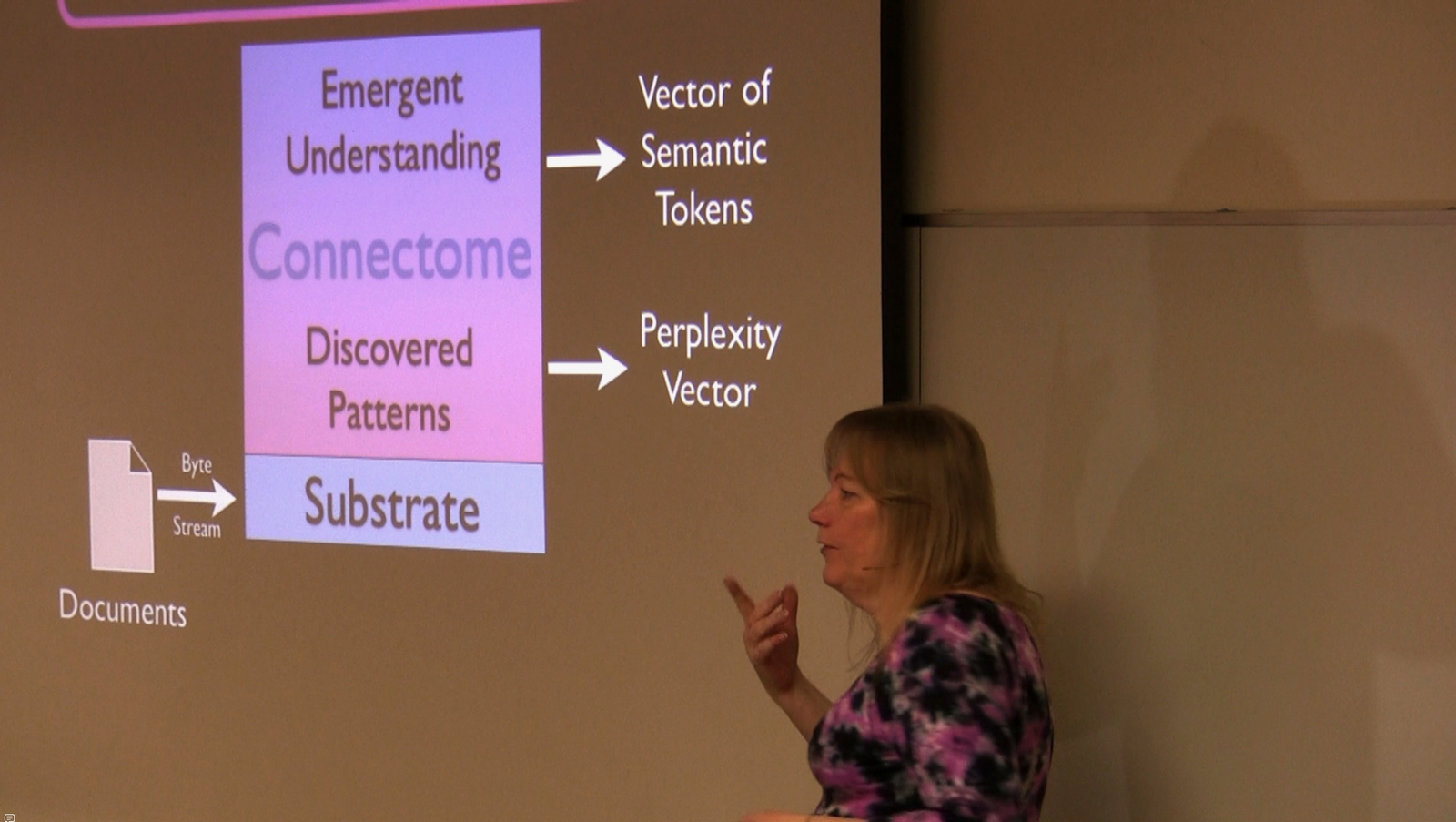has a MSCS from Linköping University and worked at Datalogi as a teaching assistent until 1982 when she emigrated to Silicon Valley. She has worked in industrial grade AI in several startup companies including Cisco, Kanisa, Google, and Kosmix. She is also the founder of Syntience Inc., a privately owned pure research company developing a technology called "Artificial Intuition" which is expected to provide a way to make computers truly understand the semantics of text in the next couple years. Her papers and talks on this site provide an introduction to her ideas and a motivation for a radical change of direction for AI research. academia.edu ![]()
Ward via matrix ![]() […] mentioned enjoying the back and forth conversation with Monica Anderson with respect to ChatGPT and especially GPT-4.
[…] mentioned enjoying the back and forth conversation with Monica Anderson with respect to ChatGPT and especially GPT-4.
> I read most of her "red pill" summary on the plane yesterday. I pull some leveraged quotes here: http://found.ward.fed.wiki/experimental-epistemology.html
Monica Anderson: I am an Experimental AI Epistemologist. We are a pretty small crowd. Since January 1, 2001 I have used Deep Neural Networks of my own design to test my theories about Learning, Understanding, Reasoning, Abstraction and other Epistemological concepts. site ![]() , post
, post ![]()

Monica Anderson has been working on alternatives to Artificial Intelligence problems by describing subsymbolic mechanisms programed as algorithms of low computational cost, which are able to solve elemental problems in a bizarre world that she has denominated as a kind of Artificial Intuition [13]. On the other hand, Tao Weidong et al[15] suggested a learning system based on intuition through Artificial Intuition Networks as a mechanism of cooperative learning which will provide to the user a game-like experience, making situations more obvious and easier to learn. Finally, Jitesh Dundas et al[14] proposed an algorithm of artificial intelligence based on intuition-like mechanism which includes grossly the following stages: 1) obtaining initial conditions, 2) obtaining an equation from recollected pieces of human experiences, 3) obtaining of weight values of importance, 4) recognition of waste information, 5) application of adjustment factors to calculate the final answer, and 6) displaying the answer to the user.
~
DIAZ-HERNANDEZ, Octavio and GONZALEZ-VILLELA, Victor Javier, 2017. Analysis of Human Intuition Towards Artificial Intuition Synthesis for Robotics. Online. SSRN Scholarly Paper. 1 January 2017. Rochester, NY. 3427647. [Accessed 21 March 2023]. Human intuition is an unconscious mental process aimed to solve problems without using a rational decision-making process. Meanwhile, the artificial intuition is a limited representation of human intuition, and it models intuitive ability of solving problems in order to be implemented in machines. In this work, we performed an analysis about analogies between human and artificial intuition using INPUTS, PROCESSING, and OUTPUTS. Mainly, we have focused on synthetize algorithms that improve robot performance in pick and place tasks, simplifying the processing stage (decision-making process), by reducing the complexity the set of instructions needed to solve the task. The experiments show that we reduced the execution time of the task aided by the algorithm and also augmented its accuracy. This new approach of artificial intuition can be exploited to solve current unsolved problems of artificial intelligence.
[13] Anderson, M. Artificial Intuition: A New Possible Path To Artificial Intelligence. 2007 site ![]()
ANDERSON, M, 2007. Artificial intuition: A new possible path to artificial intelligence. Intuition and logic. 2007. site ![]()